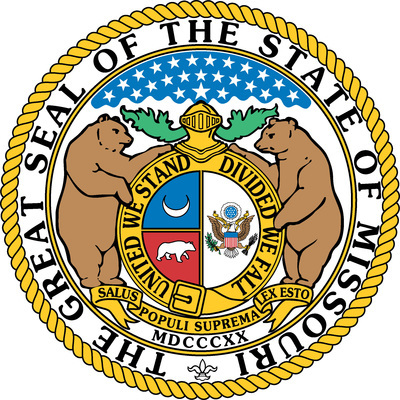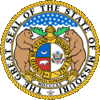Missouri National Guard deploys under governor’s charge

BY MOLLY MILLER
MISSOURI NEWS NETWORK
JEFFERSON CITY – Gov. Mike Parson is deploying members of the Missouri National Guard and State Highway Patrol to the Texas border with Mexico this week.
Parson cited President Joe Biden’s border policies as the reason for his decision, which was announced Feb. 20.
As many as 200 members of the guard are being deployed under the authority Parson has as governor.
Both the president and the governor of a guard’s state hold authority over the guard. This duality of power between the federal and state governments does not exist in other branches of the military.
The Posse Comitatus Act prohibits the military from acting as a civilian police force. Passed in 1878, the law prevents the president from activating the guard or other military branches in a law enforcement capacity unless expressly authorized by Congress.
However, according to a Congressional Research Service report, an individual state’s governor does not have to follow this provision when the guard is activated for state service.
The Missouri National Guard will “mainly assist in the construction of physical barriers and with security patrols as needed,” according to a news release announcing the deployment.
The guard may be activated under Title 10, Title 32 or state active duty. State active duty, also known as a state call up, originates from a governor’s orders to achieve a state mission that is funded solely by the state and follows state laws. Parson’s deployment to the border is considered state active duty for participating guardsmen.
“Generally speaking, a governor can do whatever they want with their National Guard,” said Joesph Nunn, a lawyer at the nonpartisan Brennan Center. “There aren’t any specific federal restrictions on what a state governor can do with their National Guard other than obviously, they can’t use the guard to violate constitutional rights or otherwise violate federal law.”
Nunn’s expertise revolves around the domestic actions of the U.S. military, including the guard.
Nunn highlighted that governors are free to send their guard to other states if invited by the governor of that state. However, he expressed concern about the precedent set by states’ National Guards being deployed within the U.S. unless absolutely necessary for cases like insurrection.
Title 10 mobilizations are for federalizing the guard with the president acting as commander in chief. Under Title 10, troops can be deployed overseas as a part of their assignment.
Title 32 involves state-level missions that are federally funded. Technically, the state’s governor remains in charge of the guard and mobilizes at the approval of the president which means the Posse Comitatus Act doesn’t apply. According to an article by the Military Officers Association of America, Title 32 is often used for natural disaster relief.
The U.S. Department of Defense classifies the National Guard, composed of the Army National Guard and the Air National Guard, as military reserve components. However, while considered a reservist force, the guard is separate from U.S. military reserves.
National guardsmen typically hold full-time civilian jobs in addition to their part-time responsibilities with the guard. Once a member joins the guard and completes the initial training portion of the commitment, they will participate in one weekend a month of drill and two weeks of additional training, usually in the summer.
The National Guard at the U.S.-Mexico Border
Lt. Gov. Mike Kehoe visited previously deployed National Guard troops on March 1 in Laredo, Texas.
In early February, Parson traveled to the border alongside 13 Republican governors at the invitation of Texas Gov. Greg Abbott. Abbott briefed the governors on Operation Lone Star, a state initiative to police the U.S.-Mexico border in Texas.
Parson pointed to overdose deaths as one of the main contributors to his decision to deploy the Missouri National Guard.
“The crisis at the southern border is fueling the fentanyl crisis here in our state,” Parson said. “Missourians are dying, families are being ripped apart, communities are being destroyed and Missouri children are falling victim.”
According to the governor’s office, fentanyl overdoses increased by 135% statewide since 2017. In October, a federal judge sentenced three men in Springfield for their role in distributing almost 83 pounds of fentanyl over approximately a year and a half. The Drug Enforcement Administration tied the fentanyl sold by the men to multiple overdose deaths.
Last Thursday, the Missouri House approved additional funding to support Parson’s operation, voting 122-12 for the $2.2 million package he requested. The majority of the money, $2 million, will go to supporting the guard, with the remaining $206,757 allocated for supporting resources. Testimony at a House hearing showed that there already was $4 million available for guard deployments in the current fiscal year, none of which has been used.
In addition to the guard, 22 members of the Missouri State Highway Patrol are being sent to assist Texas authorities.
Groups of 50 guardsmen will make 30-day rotations to serve in Texas. All members of both agencies volunteered to participate in the deployment, according to the governor’s office.
While the Missouri National Guard deployment is ongoing, this is not the first time a government official has sent guard troops to the Mexico border. Every U.S. President since 2006 has leaned on the National Guard as a resource to support Customs and Border Patrol operations at the southwestern border.
Biden announced in May that 1,500 active duty military would join 2,500 guardsmen already deployed at the border from before he took office. Biden sent the troops to support administratively in anticipation of an influx of migrants as pandemic-related restrictions were lifted.
In 2018, former President Donald Trump received backlash for deploying 5,200 active-duty National Guard troops to secure the southern border. In a memo sent to the secretaries of Defense and Homeland Security and the Attorney General, Trump stated, “The combination of illegal drugs, dangerous gang activity, and extensive illegal immigration not only threatens our safety but also undermines the rule of law.”
The former president also pointed in the memo to the precedent set by his two predecessors. Operation Jump Start launched in 2006 under former President George W. Bush. According to a report by the National Guard Bureau, 195 National Guard members who participated in Operation Jump Start hailed from Missouri. Around 6,000 troops were activated over the operation’s lifespan.
As the successor to Operation Jump Start, Operation Phalanx served a similar mission under former President Barack Obama from 2010-2016. Violence at the border, including the shooting death of a border patrol agent, prompted National Guard troops to be activated at various points along the 2,000-mile border.
In addition to Missouri, over a dozen governors from red states including Florida, Arkansas, Iowa and Tennessee heeded Abbott’s request for support from the guard for Operation Lone Star. South Dakota Gov. Kristi Noem sent 50 guard members in 2021 as the first state to support the operation in this manner.
In 2018, at the request of Trump, former Missouri Gov. Eric Greitens sent four guard troops and a helicopter to Arizona to perform aerial surveillance at the border.
History of the National Guard in Missouri
The guard originated as a state militia in 1820, being formally established in the original Missouri Constitution. According to the State Historical Society of Missouri, the Civil War caused a fission in the militia with the Missouri State Guard supporting the Confederacy and the Union Home Guard forming in opposition.
After the end of the Civil War, the Missouri State Militia replaced the two forces. The 1875 Missouri Constitution included language to professionalize the militia, which is still in the state’s Constitution. Additionally, the 1875 language included reasons the Missouri governor may activate the militia “to execute the laws, suppress actual and prevent threatened insurrection, and repel invasion.”
Two years later, the legislature changed the name of the militia to the National Guard of Missouri. In the same act, the General Assembly made special precautions to codify the guard’s actions related to mobs and riots, including when to fire upon such groups.
According to SHSMO, the General Assembly reorganized the guard multiple times throughout the 20th century, including to add federal authority and funding to the guard’s organization.
The Missouri National Guard has aided the government overseas and domestically since its inception. Army National Guard members from Missouri served in both world wars before the Air National Guard’s founding in 1947. National Guard units deployed during the Korean War, to Operation Just Cause in Panama, and to Operation Desert Storm in Iraq.
Domestically, the governor called on the guard for assistance during the 1993 flood, post-9/11 terrorist attacks, the Joplin tornado recovery and the 2014 Ferguson protests. The guard also provided support to COVID-19 vaccination efforts throughout the state at Parson’s request.
According to the Missouri National Guard’s website, 12,000 individuals are serving the state as members.
More recently, Missouri voters approved a change to the state’s constitution with 60.22% of the votes in November 2022, creating a separate agency for the guard. Since 1974, the Department of Public Safety housed the National Guard Bureau at the state government level. Proponents of passing the agency pointed to streamlining communication between the governor and the guard to increase the efficacy of operations.
Please support The Press-News Journal by subscribing today!
You may also like:






